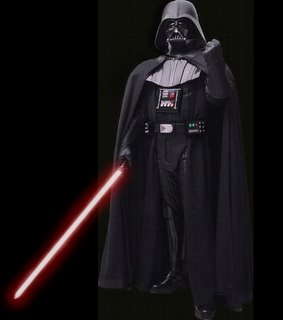The Jedi and the Samurai: A Literary Analysis of Star Wars
 The basis of George Lucas’ 1977 epic, Star Wars Episode IV: A New Hope (which was the first in a series of movies which eventually spanned six films altogether, the last of which to be released in 2005) was set with an extinct order of guardians to the government known as the “Jedi” who had long since been crushed; this “Order of the Jedi” was so definite and well-defined by Lucas that many wondered where his inspiration came from for such a powerful and judicious assemblage. The foremost group which the Jedi Order can be likened to, however, is the Japanese “Samurai”, and though there are many divergences, the parallels between the two groups is one that cannot be ignored.
The basis of George Lucas’ 1977 epic, Star Wars Episode IV: A New Hope (which was the first in a series of movies which eventually spanned six films altogether, the last of which to be released in 2005) was set with an extinct order of guardians to the government known as the “Jedi” who had long since been crushed; this “Order of the Jedi” was so definite and well-defined by Lucas that many wondered where his inspiration came from for such a powerful and judicious assemblage. The foremost group which the Jedi Order can be likened to, however, is the Japanese “Samurai”, and though there are many divergences, the parallels between the two groups is one that cannot be ignored.Unfortunately, not much is revealed about the Jedi in A New Hope. As a matter of fact, there is only one veritable Jedi in the entire film, Obi-Wan Kenobi, who says of the Order, “For over a thousand generations, the Jedi were the guardians of peace and justice in the Old Republic.” Also demonstrated throughout the film by Obi-Wan’s actions, it is obvious that peace was one of the strongest of the moral codes of a Jedi, as he preferred to solve problems through diplomatic, conciliatory means.
The opposite can be said of the Samurai, conversely, as the Samurai were known as warriors that obeyed only the daimyo, who then obeyed only the shogun, who was in command of all the land. In rejoinder to the Samurai’s loyalty they were given land and wealth, and in time their purpose evolved from simple tax collections for the daimyo to peacekeeping missions and military coalitions.
As stated earlier, though the differences are highly prominent, so are the similarities; both the Jedi and the Samurai are widely respected as a force for good, the Jedi through their Council and the Samurai through his own daimyo, and the main goal of both groups is to preserve order in “the system”, though the Samurai find their order more-often-than-not through chaos. Not completely pacifist himself, however, Obi-Wan is seen to have a warrior side which becomes prevalent when the part of the “conscientious observer” fails and “aggressive negations” must take place: as a skilled swordsman (like the Samurai), Obi-Wan is able to compete with Darth Vader in his final scene in the film using only his lightsaber, the weapon most predominant within the Jedi Order (just as is the daisho to the Samurai warrior, and as the blade of a daisho is hidden from view of the public by a sheath, so is the blade of the lightsaber hidden within the handle of the energy sword, and as the daisho was only to be carried by Samurai, so is the lightsaber only to be carried by verified Jedi).

Says Obi-Wan Kenobi of the Force, “It’s an energy field created by all living beings. It surrounds us and penetrates us; it binds the galaxy together.” Though the Samurai had no specified religion, the concepts of the Force developed throughout the film parallel almost directly with those of Zen Buddhism, a philosophy which every Samurai followed to the highest degree and internalized throughout their lives, more so than even a religion could be internalized; both the Samurai and the Jedi spent many years of their lives meditating at temples. Obi-Wan’s strong spiritual side can be seen in the Samurai as well; the mystical Force itself can be likened to the Japanese energy form Samurai were required to master called ki (also seen as chi), which is defined itself as “the circulating life energy that in eastern philosophy is thought to be inherent in all things”. Once again, the similarities cannot be denied.
We can even see the essence of the Samurai in the clothing worn by Obi-Wan, a layered tunic bound at the waist which is traditional Jedi attire, as well as that of the Samurai warrior.
The fall of the Jedi and the fall of the Samurai even lay on shared fields. The Samurai, who obeyed only their daimyo, were sent into isolation when the Emperor’s power destroyed their master’s existence, leaving the loyal Samurai forlorn and lost to cluster together into renegade groups of warriors that fought for their own existence as well as the knowledge of Zen Buddhism, which had begun to fade away. This is seen in A New Hope when Obi-Wan tells the tale of the Jedi, who were once powerful until they fell under the grip of the evil Empire, who left only renegade Jedi surviving, Obi-Wan being one of those lost Jedi, wandering the galaxy hoping to keep the philosophy of the Force alive, thus the title.
Even in death, the Jedi and the Samurai run together. The Samurai say of dying, “The Way of the Warrior is the resolute acceptance of death.” We see this same philosophy in Obi-Wan Kenobi in his battle against Darth Vader; he feared not death when it came to him…he faced it honestly and completely, knowing that it was not a fact in life, setting down his blade and placing the cloak atop his head, giving way with the resolute acceptance of death and therefore becoming one with the Force.
Post a Comment